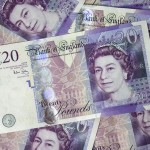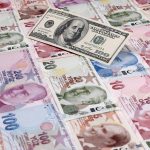Gold hovered near the highest in four months on Monday as investors sought safety in the metal amid volatile markets and ahead of the European Central Bank’s policy meeting. Silver and platinum dropped, while palladium rose. Copper slid as Chinese home prices fell further and Q4 GDP growth is projected to come in below the government target.
Comex gold for delivery in February was down 0.11% at $1 275.5 per troy ounce at 10:34 GMT, shifting in a daily range of $1 282.0 – $1 274.6. The precious metal settled 0.96% higher on Friday at $1 276.9.
Markets were rattled after the Swiss National Bank unexpectedly removed a three-year-old cap of it currency against the euro last week, which resulted in a 30% increase in value for the franc. Concerned about the fallout of the move, gold traders launched a wave of safe-haven bids.
The decision also came ahead of ECB’s policy meeting scheduled for January 22, during which official are expected to announce a bond-buying program as a measure to fight deflation.
“Volatility in European currency markets encouraged further gold safe-haven demand,” said ANZ analyst Victor Thianpiriya, cited by CNBC. “Gold physically-backed ETF inflows … if sustained will likely support higher gold prices in the medium-term.”
Assets in the SPDR Gold Trust, the biggest bullion-backed ETF, marked their biggest daily increase since May 2010 and climbed 13.74 tons on Friday to 730.89 tons. Changes in holdings typically move gold prices in the same direction.
Adding instability to the European markets is the threat of Greece leaving the Eurozone. The country may be the first to exit the 19-member group should the Syriza party win at the elections scheduled for January 25.
Gold also received support from increased physical demand in China, the metal’s largest consumer, as people exchange gold gifts for good luck during the Lunar New Year holiday celebrated on February 19th and 20th.
Trading on Monday is expected to not be very active, as the US celebrates the Martin Luther King, Jr. Day. However, activity is projected to pick up during the eventful week. Key data from China is projected to add to volatility, while the Bank of Japan’s two-day policy meeting is also scheduled to kick off tomorrow.
The US dollar index for settlement in March was down 0.06% at 92.830 at 10:34 GMT. The US currency gauge gained 0.30% on Friday to 92.890, holding in a daily range of 93.565 – 92.380. A stronger greenback makes dollar-denominated commodities more expensive for holders of foreign currencies and curbs their appeal as an alternative investment, and vice versa.
Copper
Copper fell for the first time in three sessions as falling housing prices and projections for a further slowdown in Chinese economic growth implied lower demand. However, support was drawn by government plans to increase infrastructure spending that would boost copper consumption.
Comex copper for delivery in March was down 0.75% at $2.5975 per pound by 10:33 GMT, having ranged between $2.6360 and $2.5900 during the day. The contract rose 2.3% to $2.6170 on Friday, drifting further away from Wednesday’s 5-1/2-year low of $2.4235.
The industrial metal drew support after Chinas State Grid Corp. said it will boost investment by 24% to 420.2 billion yuan ($68 billion), following a 14% increase last year. This would increase copper consumption in the power sector by 8.7% to 4.62 million tons, state-backed research company Antaike said. The power sector accounted for almost 50% of Chinas 8.7-million-ton consumption of refined copper last year. China is the worlds biggest producer and consumer of the red metal.
However, analysts had mixed sentiment on what the move might mean for copper demand amid expectations by some that the previous years forecast for a 14% increase in infrastructure spending might not have been achieved.
“These are huge numbers theyre talking about,” said for CNBC Joel Crane of Morgan Stanley in Melbourne. “Ill believe it when I see it”
Meanwhile, Daniel Hynes, a senior commodity strategist at Australia & New Zealand Banking Group Ltd., said for Bloomberg: “These announcements over the past couple of days certainly should support the market. But whether it’s enough to build confidence is another question. You need that support from positive data points alongside these announcements.”
China’s National Bureau of Statistics reported that new home prices in 68 out of 70 medium and large cities monitored fell by an annualized 4.3% in December, compared to a 3.7% drop a month earlier, a fourth straight monthly decline.
Falling under the spotlight, the statistics agency is expected to report on Tuesday that the Chinese economy expanded at the annual rate of 7.2% in the fourth quarter, falling for a second straight quarter below the government’s targeted 7.5%. If confirmed, it would bring full-year growth below the target and would be the slowest in 24 years.
Later in the week, HSBC, in collaboration with Markit Economics, are likely to report that activity in Chinas manufacturing sector slid contracted for a second straight month. The Flash HSBC Manufacturing PMI probably slid to 49.5 in January, compared to Decembers final reading of 49.6.





